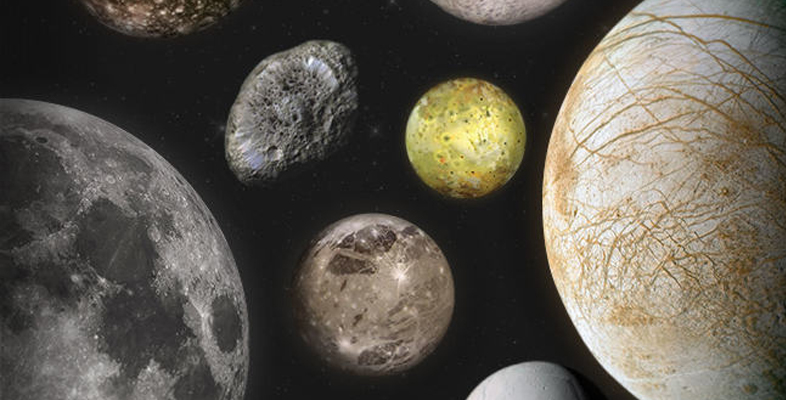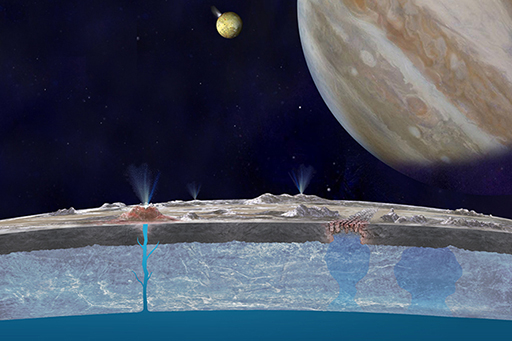2.8 Europa
Despite its hostile, cold surface Europa is one of the most intriguing places to look for life. It has a crust made from ice and an ocean underneath the ice, and so there are two places where life could have established itself.
First, photosynthetic microbes could live in the diurnal tidal cracks, taking advantage of the liquid water there. A few centimetres down in a crack, they would be sheltered from radiation by the water or slush above them, but still able to use sunlight as an energy source. They would be relatively easy to detect because their remnants might be present where slush from a closing crack is pushed out onto the surface.
Second, the ocean beneath the ice has potential as a habitat because it is shielded from the adversities of space such as cosmic radiation and (small) impacts. Most importantly, it is made up of the key ingredient for a habitable environment: liquid water. Volcanoes or hot springs on the ocean floor might deliver the two other key ingredients: energy and nutrients – very similar to what has been observed at the mid-ocean ridges on Earth. To explore the possibility of life near Europa’s ocean floor is much more complicated than looking at the tidal cracks, since a space probe would have to melt or drill through the ice, dive deep into the ocean and then transmit its findings back to Earth.
See also:
- Future exploration of Enceladus [Tip: hold Ctrl and click a link to open it in a new tab. (Hide tip)] . Not Europa, but Enceladus. A BBC online article from Dec 2015 containing two excellent audio interviews. Well worth a listen if you want to learn more about life and how to find it.
- More Enceladus ideas. Ideas for future Enceladus exploration aired in 2016, reported in a New Scientist article.
- NASA’s Europa Clipper mission. Latest news about the (now officially approved) NASA mission to Europa.
- Enceladus and Europa news 13 Apr 2017. David Rothery and the BBC’s David Shukman talking about detection of hydrogen in Enceladus’s plume and other news.
- Radio Sputnik (Moscow World Service) interview about Enceladus habitability . 10 minute radio interview on 14 April 2017 by David Rothery about Cassini’s discovery of molecular hydrogen in Enceladus ’s plumes.

